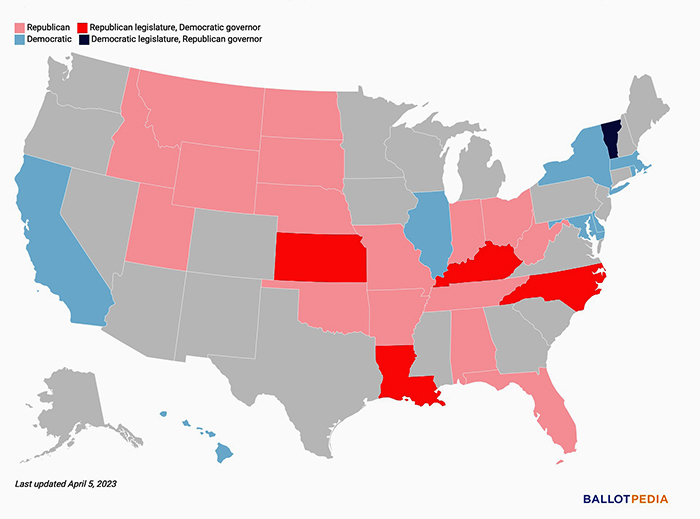

In the modern era of highly partisan politics, it is not surprising that 29 states have legislatures with supermajorities. What constitutes a supermajority varies from state to state. The usual definition is whatever it takes to override the governor's veto. It is commonly two-thirds or three-fifths, but in Alabama, Arkansas, Indiana, Kentucky, Tennessee, and West Virginia it is a simple majority. Here is the map showing the states with supermajorities, 20 for the Republicans and 9 for the Democrats:

When either party has a supermajority in both chambers, it can do whatever it wants to, without regard to anyone or anything. This allows them to ram through controversial legislation that is often quite unpopular in the state. For example, Republicans in Kansas and Kentucky recently overrode gubernatorial vetoes on bills relating to transgender issues, abortion, and work requirements for food assistance. In many cases, the governor is from the same party as the legislative majority, so there may not be a conflict. However, in some cases, firebrands in the legislature may be able to pass laws that even their own governor considers too extreme.
Most of the action, however, is in states where the governor and legislative majority are from different parties. There are four states with a Republican supermajority and a Democratic governor: Kansas, Louisiana, Kentucky, and North Carolina. In these states, the Republicans can just run roughshod over the governor. There is only one state, Vermont, where the Democrats have a supermajority but the governor is a Republican. In the other 24 superstates, the governor and legislature belong to the same party, but that does not always prevent conflicts as legislators come from very small, very gerrymandered, very partisan districts, and governors are elected statewide. (V)